Fight Scene Guide Step-by-Step
I have always said that I couldn’t give folks a step-by-step fight scene guid. Everyone’s writing voice and storyline are different and so it’s hard to do a one-size-fits-all sort of situation and I certainly didn’t want writers to go by a formula. That’s basically copying and copying doesn’t lead to creativity. Right?
Wrong.
copy paste copy paste copy paste copy paste
Copying Leads to Creativity
According to a study in Japan, the exact opposite is true. Artists were given three days to paint something. On the second day, half of the artists were given a famous painting to copy. On the third day, those artists that spent time copying were actually more creative than those artists who focused solely on their own creation.
Copying allowed the artists’ brains to paint without pressure. Without the pressure to create something new, their brains focused on the choices made by the artist of the painting copied. And, consciously or subconsciously, the artists compared the choices of that artist to the choices they make when they paint. They began to consider possibilities they hadn’t before. In essence, copying gave their brain a chance to think in a new way which led to completely new ideas.
It also allows the brain to consider the work it is emulating on a deeper level and kind of reverse engineer it, see why it works. Kurt Vonnegut did this very thing in a master’s thesis he wrote while at the University of Chicago. He looked at popular stories and mapped out the protagonist’s ups and downs. What he found was that time and time again, not all, but many stories have a distinct shape that looks something like this: (the woman’s voice only goes for about 30 seconds)
If you haven’t read Vonnegut, do!
So, maybe copying a fight scene format isn’t such a bad thing. I have always said that fighting is like writing and I have certainly emulated my coaches. After all, they know what they are doing.
Therefore, fellow fightwriters, this post is all about a formula you can follow. It is just a suggestion that you can follow to get your own style going. Now, this is a concept in progress, ok? I am refining it, but I talked about it in an interview today and it was pretty well received. Hopefully you will find it useful. Also, this relates to verbal altercations as well. In verbal fights, the injury and pain is emotional.
Fight Scene Guide
The guide we’ll follow will have four parts, all of which are based on a sanctioned fight: walk out, face off, throw down, take away.
The Walk Out
The fighter stands behind the doors to the arena. She is safe. All is calm, quiet. The doors open and she is flooded with external stimuli; sights, sounds, smells and visceral sensation. The walkway to the ring is a downward slope, pulling her toward the bout. The tension in the room builds the closer she gets to the ring.
Have your character start out in a place of safety. Then allow the story to push them toward the fight. Add in sensory details to pull your reader into the scene. Give them a front row seat to the altercation.
As your character moves closer to the fight, build the tension. And you can do this even if the character has no idea that a fight will take place. Maybe in the midst of the calm you can add in a sensory detail that gives warning: a sound, a shadow. You can also give the character a sudden, inexplicable, uneasy feeling which, by the way, is scientifically accurate. Our conscious minds might overlook certain stimuli. But the nonconscious mind doesn’t miss much. You can choose to let the reader know what gave the character that uneasy feeling or not. You can also build tension by hinting to or outright showing the reader what lies ahead.
The Face-Off
A face-off is when fighters stand in the middle of the ring face-to-face. This is the moment that the fight gets real. It is no longer just a circled date on the calendar. A face-off is a baptism into the reality that you are about to battle another human being who wants the same thing you do, and they will hurt you to get it. During a face-off, you are completely aware of what is at stake.
Often, for professional fights, the organizers have the fighters face-off publicly days before they meet in the ring. There is one purpose for this: build tension. The more tension there is between fighters, the more folks seem to invest in the outcome not only emotionally but in ticket sales.
The moment your character faces the reality of the attack and their brain switches into defensive mode, they are in the “face-off.” And it won’t be immediate. The mind needs a hot minute to make sense of what is happening and to determine what is at stake, or, why it needs to fight. That why is of the utmost importance. Nothing has a greater impact on a fight than why it is happening. It is the first thing I talk about in my WDU class because what is at stake, or, the why, determines the speed, style and intensity of combat.
That face-off moment for your character also gives you the opportunity to create tension. If the stakes are high, tension will be inherent. I mean, we don’t usually write, “in that moment, she knew that she would die or whatever, no biggie.” Heck no, uh-uh. We make our character “rage against the dying of the light.” And, hopefully, our readers will be invested enough in the threatened character that wet-fingered anxiety will creep over their skin at the thought of that character’s demise.
Throw Down
This is when the fighters clash, when fist meets sweaty flesh with a smack. Red welts become blood filled knots. Eyes swell into aubergine eggs. Crimson mingled sweat flows down, making maps of pain on the skin. Fluid fills contusions until faces become amorphous mounds of human pulp.
This is when your character fights. It is also when fight scenes tends to go way off the rails. The number one issue I see with fight scenes is simply writing too much. I go into this a little more in depth in this post and use a reporter’s recount of the Thrilla in Manila as an example. In the historic fight between Ali and Frazier, about 500 punches are thrown. The reporter, however, only documents a small fraction of those. Why? Because readers don’t care about every single punch. They want to know what happened as the result of them.
For this fight scene guide, only include three major moves of the fight. Choose the ones that have the greatest impact on the fight, pun intended. After each move, back away from the action a bit. Go into the heads of the fighters, maybe add in a little dialogue, yes, I know that’s not always realistic. But, look, action movies do it all the time and viewers are fine with it. Just keep it to a minimum unless the pacing is slow and the fighters are making a point to talk while threatening one another i.e. The Princess Bride in the fight between Inigo and Westley as the Dread Pirate Roberts.
When it comes to choosing which fight moves to highlight, take a cue from comic books and graphic novels. These works detail lengthy fight scenes in just a few panels. The artist chooses the moves that have the greatest impact on the scene. Every other punch happens in the head of the reader.
Something else comic books are great at is adding in sensory details. When one character hits another, there is a call-out balloon noting sounds, illustrations of flying sweat and blood and the faces of the characters tell far more about the punch than the drawing of the fist. Writers, you don’t have to write a punch to show a punch. The description I gave about fighters clashing in the ring gave vivid imagery of fighting and I only included one punch. By the way, do you remember the punch in that snippet? Or do you remember the imagery?
Sensory details of a fight are what a reader will remember. Maya Angelou once said that people will forget what you say, but they won’t forget how you made them feel. I think that pertains greatly to writing and fight scenes especially. Give the reader something they can relate to: pain. We all understand injury and pain.
Take Away
After a fight, win or lose, a fighter has to decide what comes next. Will they keep fighting, or will they leave the sport? If they keep fighting, they will need to improve not only to win if they lost, but to keep winning if they won.
After your character fights, there should be an evolution, a change that comes about as a result of the fight. If the character doesn’t change in some way, you risk losing your reader. If you do the work to get a reader invested in a character, the character’s suffering has to have some meaning. That meaning may be to show the tenacity of the character, to steel their resolve. Or, it may be to crush the character from the inside out, forcing them to retreat into the safety of isolation.
Fight Scene Guide Review
And there you have it. A guide for writing a fight scene with four distinct parts. One more time, here they are:
Walk out – The character goes from safety to peril, the tension gradually increases, sensory elements bring your reader ringside.
Face-off – The character realizes they are in danger, the stakes of the fight are made known, tension is at a zenith.
Throw down – The fight ensues, high light three movements backing away from the action after each, high light the sensory details of the fight
Take away – The character changes as a result of the clash
And there you have it, writers, a kind of step-by-step situation for organizing your fight scene. Soon I will post a fight scene guide that is more like mapping.
Until the next round of FightWrite™ on the WD blog, get blood on your pages!





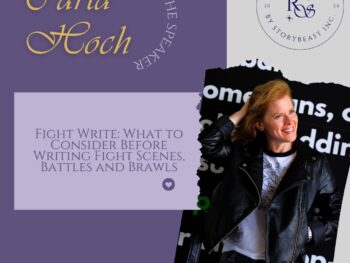
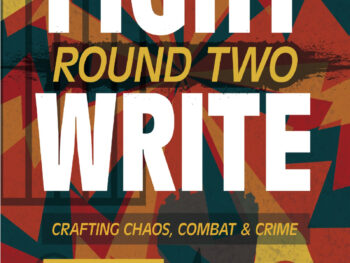
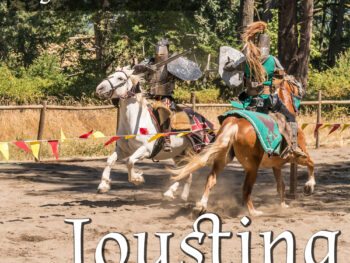

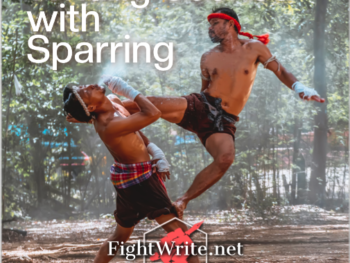
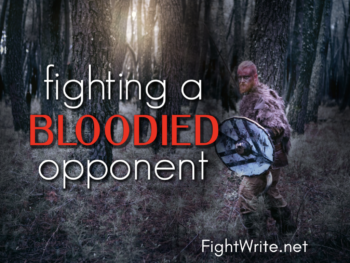
I consider something really special in this internet site.
Hi there, I found your web site via Google while searching for a related topic, your website came up, it looks great. I’ve bookmarked it in my google bookmarks.
I am not rattling fantastic with English but I come up this really easy to interpret.
Thanks a bunch for sharing this with all of us you actually know what you’re talking about! Bookmarked. Kindly also visit my web site =). We could have a link exchange agreement between us!
Yeah bookmaking this wasn’t a high risk decision outstanding post! .
Excellent post. I was checking continuously this blog and I’m impressed! Very helpful information particularly the last part 🙂 I care for such information a lot. I was seeking this certain information for a very long time. Thank you and best of luck.
You have remarked very interesting details! ps nice web site. “Where can I find a man governed by reason instead of habits and urges” by Kahlil Gibran.
I got good info from your blog
Some times its a pain in the ass to read what people wrote but this internet site is very user pleasant! .
Utterly indited written content, Really enjoyed studying.
Absolutely written content material, appreciate it for selective information.
Hello. Great job. I did not anticipate this. This is a impressive story. Thanks!
Keep up the fantastic work, I read few articles on this internet site and I conceive that your website is rattling interesting and has got circles of excellent information.
Thanks for sharing excellent informations. Your web site is so cool. I’m impressed by the details that you’ve on this blog. It reveals how nicely you understand this subject. Bookmarked this web page, will come back for extra articles. You, my pal, ROCK! I found just the information I already searched everywhere and just couldn’t come across. What a great web-site.
I would like to thnkx for the efforts you have put in writing this web site. I am hoping the same high-grade site post from you in the upcoming also. In fact your creative writing skills has inspired me to get my own blog now. Really the blogging is spreading its wings fast. Your write up is a great example of it.
Youre so cool! I dont suppose Ive read anything like this before. So nice to seek out someone with some original ideas on this subject. realy thanks for beginning this up. this website is one thing that’s wanted on the internet, somebody with a bit originality. useful job for bringing something new to the web!
What i don’t understood is in reality how you’re no longer actually a lot more well-appreciated than you may be now. You are very intelligent. You already know thus significantly in terms of this topic, made me in my view believe it from numerous varied angles. Its like men and women are not involved until it’s one thing to do with Woman gaga! Your individual stuffs nice. Always take care of it up!
I have been absent for some time, but now I remember why I used to love this blog. Thanks , I will try and check back more often. How frequently you update your site?
Lovely website! I am loving it!! Will be back later to read some more. I am taking your feeds also.
You could certainly see your expertise in the paintings you write. The sector hopes for more passionate writers such as you who are not afraid to mention how they believe. Always follow your heart.
Would you be considering exchanging links?